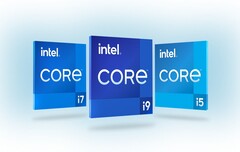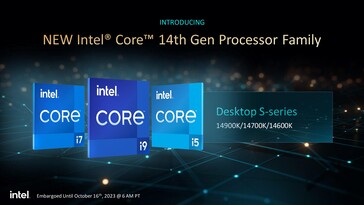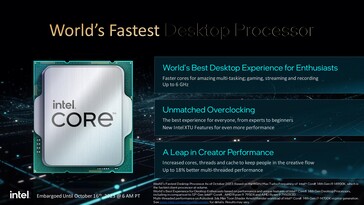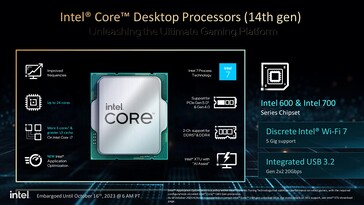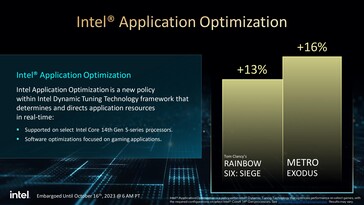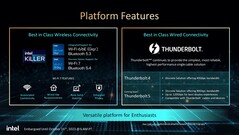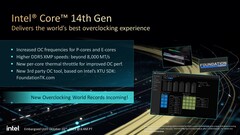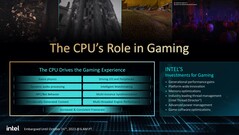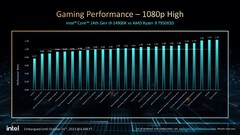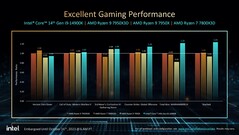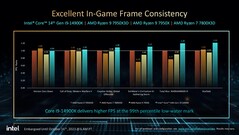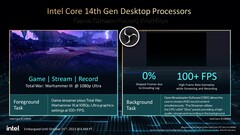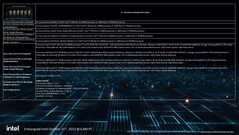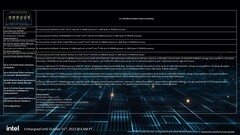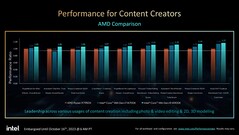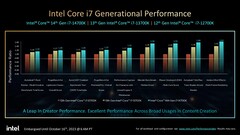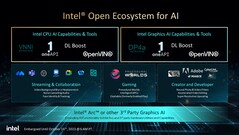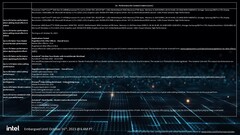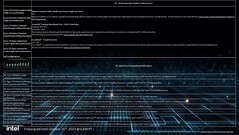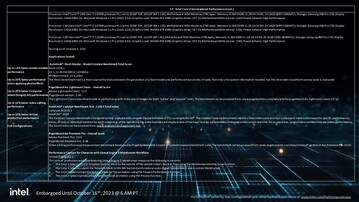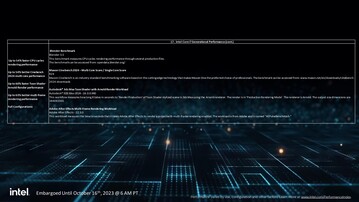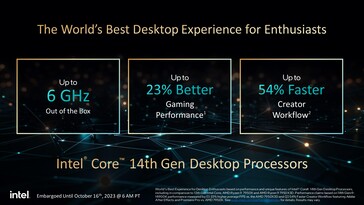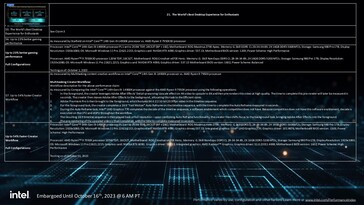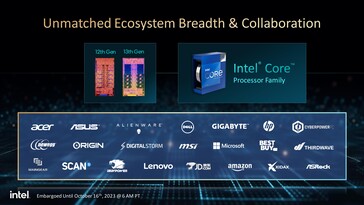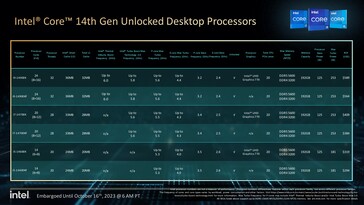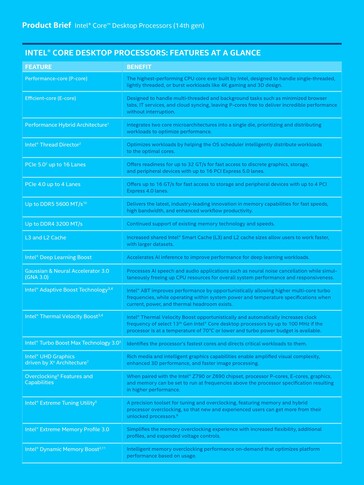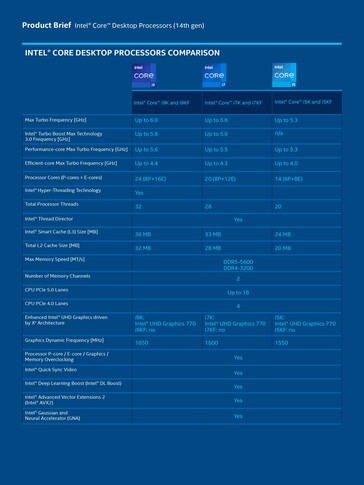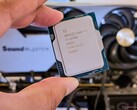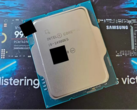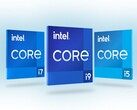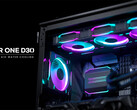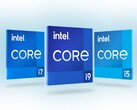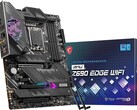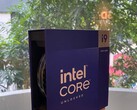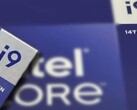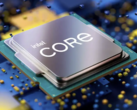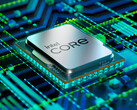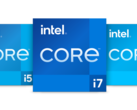The Intel 14th gen desktop processors have been in the news for quite some time, and now the company has officially taken the wraps of what is essentially an incremental upgrade and appropriately called the Raptor Lake-S Refresh. With Raptor Lake-S Refresh, Intel is aiming to offer a 6 GHz boost right out of the box instead of having to fiddle with BIOS settings as was the case with the 13th gen.
Intel 14th gen Platform Features: Support for DDR5-8000 and Application Optimization similar to Arc GPUs
The new 14th gen Raptor Lake-S Refresh has only minor differences from the current 13th gen lineup, and it is based on the same Intel 7 10 nm process. As such, current Intel 600 and 700 Series chipsets should be fully compatible with the new processors. Motherboard OEMs have already started shipping updated BIOSs that enable drop-in compatibility with 14th gen processors.
That being said, there are a few tweaks this time around. Intel is bringing Application Optimization (APO), similar to the Advanced Performance Optimizations found in the Arc family of GPUs, to select 14th gen desktop processors. Intel says that APO is a framework within Dynamic Tuning Technology (DTT) with a focus on gaming.
APO allows certain games that Intel has partnered with to have a slight performance edge. The APO functionality cannot be turned off. It is not exactly clear if the 14th gen APOs have the same effect as that of the implementation found in Arc. It may be recalled that UL Benchmarks invalidates any 3DMark run with Arc APO enabled.
The other new feature is support for Wi-Fi 7 and Bluetooth 5.4 as discrete options along with Thunderbolt 5. We also get to see new overclocking features including support for DDR5-8000 XMP profiles, preview features coming to Intel XTU, and AI assistance for overclocking on the Core i9 series.
Intel Core i9-14900K vs. AMD Ryzen 9 7950X: Gaming performance
We will have our own gaming and performance benchmarks for tomorrow's review embargo, but Intel's marketing numbers show gains in some games and regressions in others compared to AMD's desktop Zen 4 offerings such as the Ryzen 9 7950X and the Ryzen 9 7950X3D. Intel also dwelt on the importance of 99% percentile numbers. Once again, the benefits of 14th gen with such metrics are heavily game-dependent.
Intel Core i9-14900K vs. AMD Ryzen 9 7950X: Content creation
Intel's content creation benchmarks including PugetBench, CrossMark, Autodesk, UL Procyon, and Cinebench 2024 show a decent uplift for the Core i9-14900K over the Ryzen 9 7950X. That being said, the gains are relatively lower in tests such as Cinebench 2024 multi-core and 3DSMark Toon with the Arnold Renderer.
Of particular interest are the generational benefits with the new Core i7-14700K/KF that now offers a 20-core 28-thread configuration over the Core i7-13700K's 16 cores and 24 threads.
Naturally, this also means that the combined L2/L3 cache has now increased to 61 MB compared to 54 MB in the Core i7-13700K/KF.
Performance claims do not seem realistic vis-à-vis Ryzen Zen 4
Overall, Intel claims a 23% higher performance in gaming for the Core i9-14900K over the Ryzen 9 7950X3D. This is in the game Starfield at 1080p, according to the footnotes.
For some reason, the AMD system was run in the Balanced profile with the CPU at a 120 W TDP while the Core i9-14900K's PL1 itself was set at 253 W and in a High Performance power plan.
Similarly, for the 54% gains in content creation claim, the Core i9-14900K is showing running at a 253 W PL1 while the Ryzen 9 7950X, a 175 W chip, is gimped at 105 W.
Therefore, marketing numbers ought to be taken with a big pinch of salt. We will get a better picture for ourselves once we test the 14th gen CPUs ourselves.
Pricing and availability
The 14th gen series is being led by the Core i9-14900K, a 24-core 32-thread part, at a US$589 RCP while the KF variant without the (still unchanged) UHD Graphics 770 iGPU can be had for US$564. At the bottom of the table is the 14C/20T Core i5-14600KF that will set you back by US$294 RCP.
Intel is only detailing the main SKUs in the Core i9, Core i7, and Core i5 segments for now. Additional SKUs and a possible Core i9-14900KS and a Core i3 lineup are likely to be announced at CES 2024 as has been the norm.
Source(s)
Intel Press Brief


